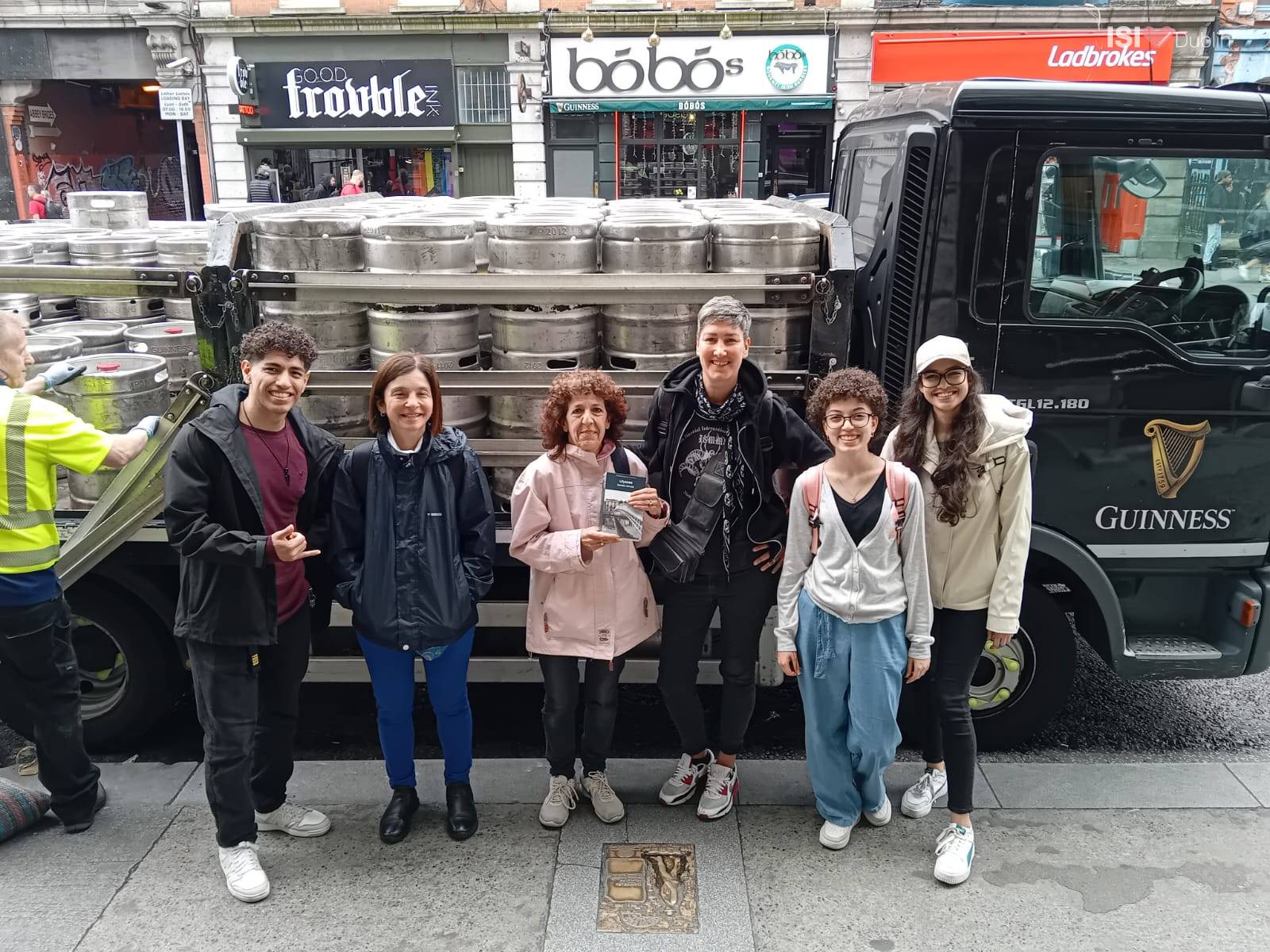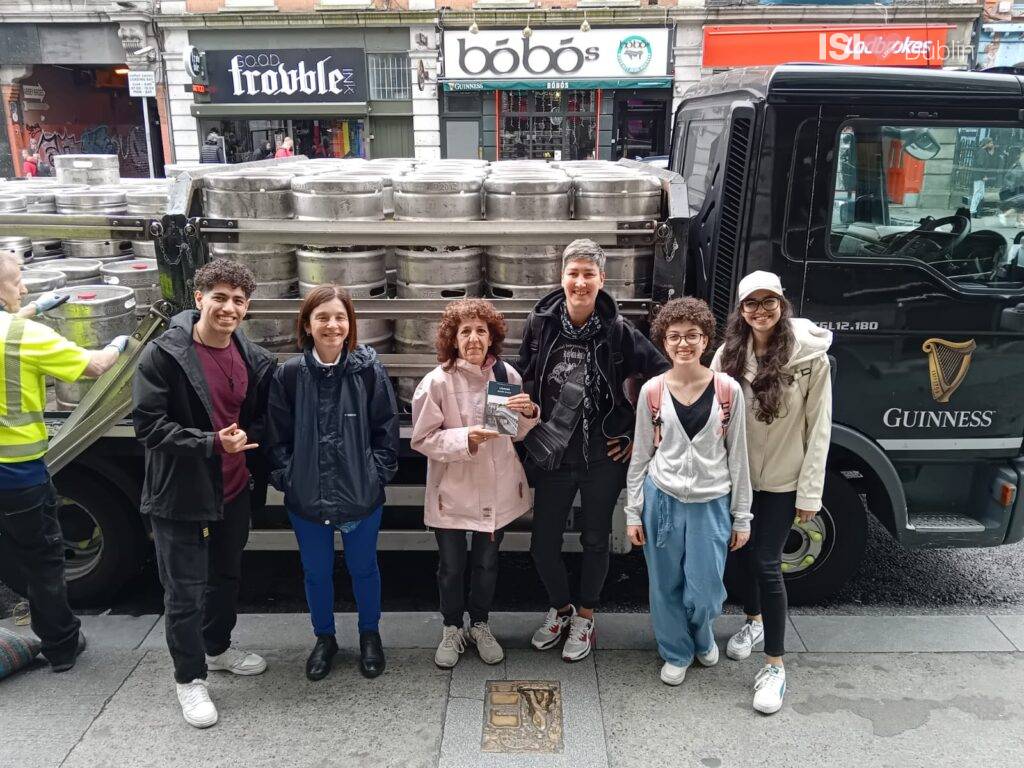
If you’re a James Joyce fan and are planning on travelling to Dublin to work and study, do some teacher training, or simply soak up the vibrant atmosphere of this UNESCO City of Literature, you might want to make ISI Dublin your first port of call. Amongst the myriad locations of the city connected to Joyce’s corpus, ISI Dublin’s Meeting House Lane campus is housed in the last remaining building of Saint Mary’s Abbey, whose Chapter House features in Ulysses(1922) as “the most historic spot in all Dublin.”
From here, it is just a short jaunt — one we make regularly with our students — to Middle Abbey Street and the erstwhile offices of the Evening Telegraph, employers of Ulysses’ principal protagonist, Leopold Bloom. Following the first in a series of bronze pavement plaques, you can then trace Bloom’s midday route through Dublin, creating a mini-Bloomsday all of your own!
(Not though, perhaps, without pausing to pick up a copy of Ulysses on location — the Evening Telegraph is now a bookshop called Easons, which sells Wordsworth Classic editions of Ulysses for a paltry 4.99e; you can subsequently boast to friends or colleagues that you bought this iconic work of modernist literature “in the heart of the Hibernian metropolis” at Bloom’s very place of business, as featured in the Aeolus episode.)

Onwards, then. Where to next? Oh yes, down O’Connell Street — smelling “pineapple rock,” “lemon plait,” “butter scotch” — and across its famous bridge — where “puffballs of smoke” plume up from “the parapet.”

Crossing over to Dublin’s south side, you may wish to pause and smile “O rocks” at the windows of the Ballast Office, or continue on, by all means, crossing Westmoreland Street, to embrace the vapours of “Hot mockturtle soup” and steams of “newbaked jampuffs” rolypolying out of Harrison’s . . . (currently a Chinese restaurant).

Continuing southwards towards Trinity College, you’ll find yourself beneath Thomas Moore’s “roguish finger,” . . . smile fading, perhaps, as you walk passed its shadowy, surly front — trams passing one another, “ingoing, outgoing, clanging” — in what is perhaps one of the most compelling examples of Ulysses’ streams-of-consciousness.

What next? Perhaps stay on route, in which case you’ll end up at the National Museum near Trinity College via Grafton Street. Or you could follow the college’s railings as they wrap around Nassau Street and make your way towards Sweny’s pharmacy on Westmoreland Row, where you can pick up a bar of that famous Lemon Soap!
Hmm . . . What to do? Certainly, if you make your way towards Sweny’s, you could also pop into Kennedy’s pub — Oscar Wilde’s old haunt — or, heading northbound from Westland Row, make your way to All Hallows Church: the location of poor auld Paddy Dignam’s funeral mass! Alternatively, you could make your way back towards ISI Dublin’s Meeting House Lane campus and to the house of “The Dead” on Ushers Island? Lots of choices. Let’s check out the options together in the next of this series of blog posts on ISI and James Joyce’s Dublin!


Pingback: ISI and James Joyce’s Dublin II